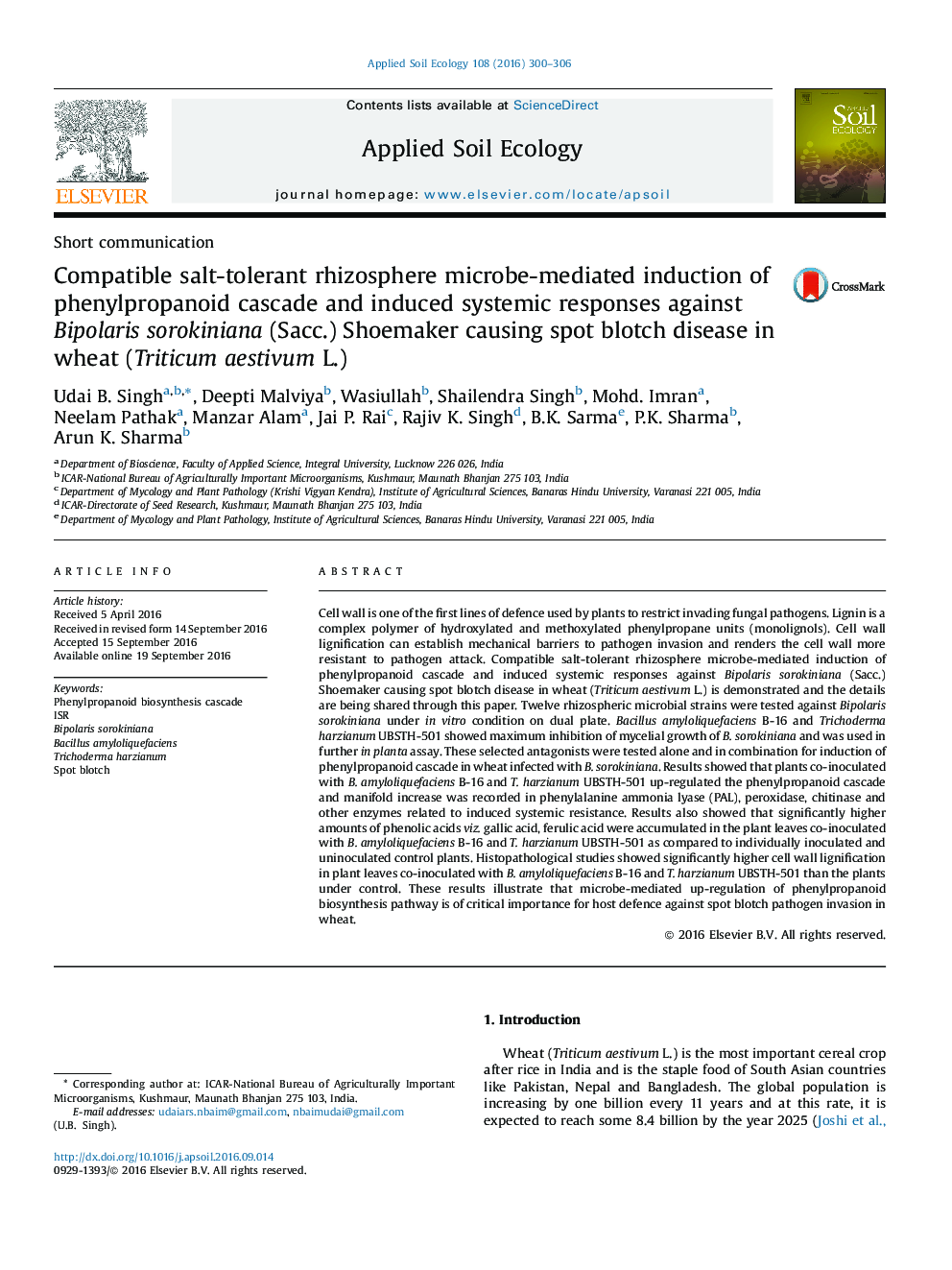| کد مقاله | کد نشریه | سال انتشار | مقاله انگلیسی | نسخه تمام متن |
|---|---|---|---|---|
| 6297418 | 1617775 | 2016 | 7 صفحه PDF | دانلود رایگان |

- T. harzianum and B. amyloliquefaciens mediated phenylpropanoid cascade in wheat was studied.
- T. harzianum and B. amyloliquefaciens induced ISR in wheat against B. sorokiniana.
- Biocontrol efficacy of T. harzianum and B. amyloliquefaciens was tested against B. sorokiniana.
- We conclude that both of the biocontrol agents have multifarious characteristics.
- We propose cost-effective and eco-friendly candidates for spot-blotch disease management.
Cell wall is one of the first lines of defence used by plants to restrict invading fungal pathogens. Lignin is a complex polymer of hydroxylated and methoxylated phenylpropane units (monolignols). Cell wall lignification can establish mechanical barriers to pathogen invasion and renders the cell wall more resistant to pathogen attack. Compatible salt-tolerant rhizosphere microbe-mediated induction of phenylpropanoid cascade and induced systemic responses against Bipolaris sorokiniana (Sacc.) Shoemaker causing spot blotch disease in wheat (Triticum aestivum L.) is demonstrated and the details are being shared through this paper. Twelve rhizospheric microbial strains were tested against Bipolaris sorokiniana under in vitro condition on dual plate. Bacillus amyloliquefaciens B-16 and Trichoderma harzianum UBSTH-501 showed maximum inhibition of mycelial growth of B. sorokiniana and was used in further in planta assay. These selected antagonists were tested alone and in combination for induction of phenylpropanoid cascade in wheat infected with B. sorokiniana. Results showed that plants co-inoculated with B. amyloliquefaciens B-16 and T. harzianum UBSTH-501 up-regulated the phenylpropanoid cascade and manifold increase was recorded in phenylalanine ammonia lyase (PAL), peroxidase, chitinase and other enzymes related to induced systemic resistance. Results also showed that significantly higher amounts of phenolic acids viz. gallic acid, ferulic acid were accumulated in the plant leaves co-inoculated with B. amyloliquefaciens B-16 and T. harzianum UBSTH-501 as compared to individually inoculated and uninoculated control plants. Histopathological studies showed significantly higher cell wall lignification in plant leaves co-inoculated with B. amyloliquefaciens B-16 and T. harzianum UBSTH-501 than the plants under control. These results illustrate that microbe-mediated up-regulation of phenylpropanoid biosynthesis pathway is of critical importance for host defence against spot blotch pathogen invasion in wheat.
An overview of cellular mechanisms up and/or down-regulated leads to ISR in wheat under pathogenic stress condition.143
Journal: Applied Soil Ecology - Volume 108, December 2016, Pages 300-306